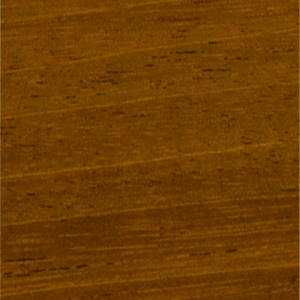- Common Name(s):Spanish Cedar, Cedro
- Scientific Name:Cedrela odorata
- Distribution:Native to Central and South America and the Caribbean;
also grown on plantations - Tree Size:65-100 ft (20-30 m) tall, 3-5 ft (1-1.5 m) trunk diameter
- Average Dried Weight:29 lbs/ft3(470 kg/m3)
- Specific Gravity (Basic, 12% MC):.38, .47
- Janka Hardness:600 lbf(2,670 N)
- Modulus of Rupture:10,260 lbf/in2(70.8 MPa)
- Elastic Modulus:1,323,000 lbf/in2(9.12 GPa)
- Crushing Strength:5,860 lbf/in2(40.4 MPa)
- Shrinkage:Radial: 4.1%,
- Tangential: 6.2%,
- Volumetric: 10.2%,
- T/R Ratio: 1.5
Cedar / Cedro
A historically valuable Latin-American timber, Spanish Cedar has been exploited in many regions, and the species is now considered to be vulnerable according to the IUCN. It’s also listed on the CITES Appendix III for the countries of Brazil, Bolivia, Columbia, Guatemala, and Peru. (It’s listing in Appendix III simply means that the countries listed have voluntarily chosen to control the exporting of the wood, and have sought the cooperation of other countries to help in enforcing these restrictions.) Spanish Cedar may still be freely exported from other Latin American countries not listed in Appendix III.
| Color/Appearance | Heartwood is a relatively uniform light pinkish to reddish brown; colors tend to darken with age. Random pockets of gum and natural oils are commonly present. Grain patterning and figure tends to be somewhat bland. |
|---|---|
| Grain/Texture | Grain is straight or shallowly interlocked. Medium texture and moderate natural luster. |
| Endgrain | Can range from ring-porous to diffuse-porous; medium-large earlywood pores, small-medium latewood pores; solitary and radial multiples of 2-3; mineral deposits (red gum) occasionally present; growth rings distinct due to terminal parenchyma in diffuse-porous samples, or lines of larger pores in ring-porous samples; rays usually visible without lens; parenchyma banded (terminal), apotracheal parenchyma diffuse-in-aggregates, paratracheal parenchyma vasicentric. |
| Rot Resistance | Spanish Cedar ranges from durable to moderately durable regarding decay resistance and is also resistant to termite attack; the wood is also reported to have excellent weathering characteristics. Older, slower-growing trees from the wild tend to produce wood that is more durable than wood from younger, plantation-grown trees. |
| Workability | Spanish Cedar is easy to work with both hand and machine tools. However, due to its low density and softness, Spanish Cedar tends to leave fuzzy surfaces if not machined with sharp cutters; extra sanding up to finer grits may be required to obtain a smooth wood surface. Also, natural gum pockets can remain wet and may ooze out onto the surrounding surface, which can clog, and gum up saw blades, and make finishing the wood a challenge. |
| Odor | Has a distinct, lingering, cedar-like scent; this characteristic of the wood makes it a favorite for cigar boxes. |
| Allergies/Toxicity | Although severe reactions are quite uncommon, Spanish Cedar wood dust has been reported as a respiratory irritant. |
| Pricing/Availability | Generally, in adequate availability, Spanish Cedar is sometimes sold in thinner 1/4″ lumber for use in liners and other small craft projects. Spanish Cedar should be in the low to moderate price range for imported lumber. |
| Sustainability | This wood species is in CITES Appendix III and is on the IUCN Red List. It is listed as vulnerable due to a population reduction of over 20% in the past three generations, caused by a decline in its natural range, and exploitation. |
| Common Uses | Veneer, plywood, cabinetry, musical instruments, (flamenco and classical guitars), humidors, and boatbuilding. |





Reviews
There are no reviews yet.